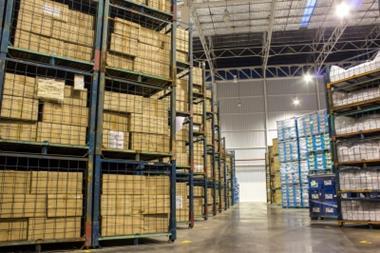Conventional insurance may not be enough and risk managers are advised to take a more holistic approach to supply chain risk
Risk managers in some businesses are failing to understand the knock-on effects to their business if fourth-tier suppliers are disrupted by a major nat cat event, Marsh has warned.
The broker said that risk professionals are too focused on losses arising from disruption related to first-tier suppliers.
Speaking to StrategicRISK, Marsh EMEA property practice leader Caroline Woolley said: “Traditionally there has been a focus on first-tier suppliers and damage-related events. They need to look further down the supply chain and beyond damage.
“Some risk managers still don’t really understand the effect on their businesses if a fourth-tier supplier is affected by a major nat cat.”
Businesses also need to look at whether they are over-reliant on a single source supplier and factor that into their insurance purchasing.
“All too often there is an expectation on the part of companies that they will be covered. Everyone has high expectations of their insurance. Insurance is a contract like any other and you need to be very careful with the wording to see what’s covered. There is definitely a recognition that supply chains are more complex than they used to be and businesses need to look beyond the first-tier supplier.
“[Major nat cats] events do raise issues about the transport of goods, and also people. But it is also important to look at your cover for non-damage business interruption,” says Woolley.
“One of the key examples in non-damage events is strikes at ports or denial of access to roads or ports in terms of nat cats. These can really affect logistics.”
According to Woolley, businesses need to realise that in many cases insurance has not caught up with the on-the-ground reality of modern supply chain complexity.
“People have tended to focus on the ‘traditional’ policies, looking separately at property damage and business interruption, marine and cargo policies,” she said.
Holistic risk assessment
But smart risk managers are now looking beyond these silos at a more holistic approach to supply chain risk.
“We are starting to see a trend now to look at ‘stock throughput’ policies that don’t just focus on these issues separately but over the whole journey, including warehousing.”
One key tactic is using supplier extensions to extend the coverage of existing polices beyond conventional limits.
However, some insurers have been restricting cover on supplier extension clauses, because these policies were not designed to fit the complex supply chains we have today.
But Woolley said: “Insurers are working on alternative products that will take cover far deeper and cover damage and non-damage cover.”
Conventional insurance may not be enough
According to Willis there are occasions, particularly for larger companies, where conventional insurance may not be enough.
Willis practice leader integrated risk management Tom Teixeira said: “Some bigger companies say to me, ‘look we have some idea what our exposures are – they’re massive – and if you’re trying to sell us a policy that is going to give us $100m of cover, that’s not going to be enough. What else can be done?”
The answer may be leveraging your captive. “A lot of companies have been complaining about the effectiveness of their captives recently,” Teixeira said.
“You can use a captive in a number of different ways in conjunction with these standalone policies.
“Each of these policies will have a deductible. One configuration is that the captive takes the deductible. Another configuration is that the captive can take the risk, fund the risk and then there is a re-insurance payout to the standalone policy.
“Capacity is an issue, but the standalone policy can act as an excess layer to the captive.
“These combinations could be used to provide greater levels of protection. We are seeing more and more standalone policies sold, and as the premium volume goes up, the rates are coming down and as they do, more attention should be given to them as a cost-effective way of dealing with the loss of a key supplier.”
According to Woolley, the key to a successful approach is to look at all aspects of a company’s operations and cover with fresh eyes
“We have to take the blinkers off. You can’t look at particular area of your operations in isolation.
“Increasingly companies are looking at their full-value chain from supplier, in transit, on locations and even in customer locations.
“Rather than looking at logistics in isolation, you have to look at the overall risk. You have to try and draw all the elements together.
“Rather than insurers focusing on perils, they need to look at the impact on the business. After all, this is the important thing for businesses and the insured.”




















No comments yet